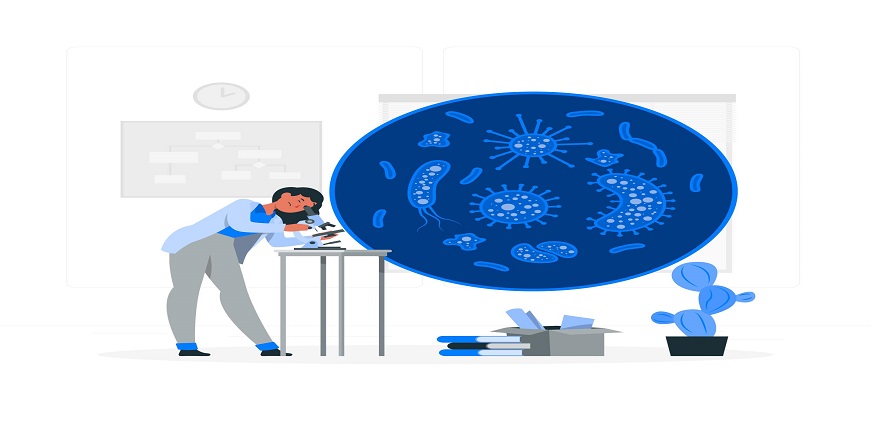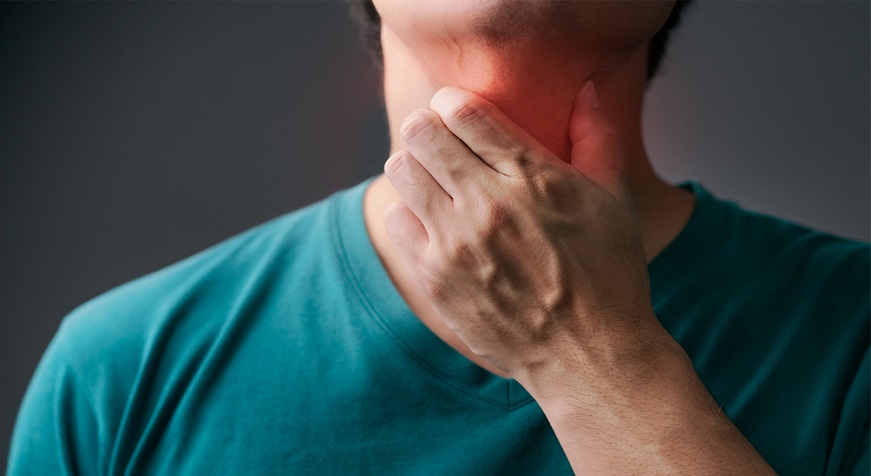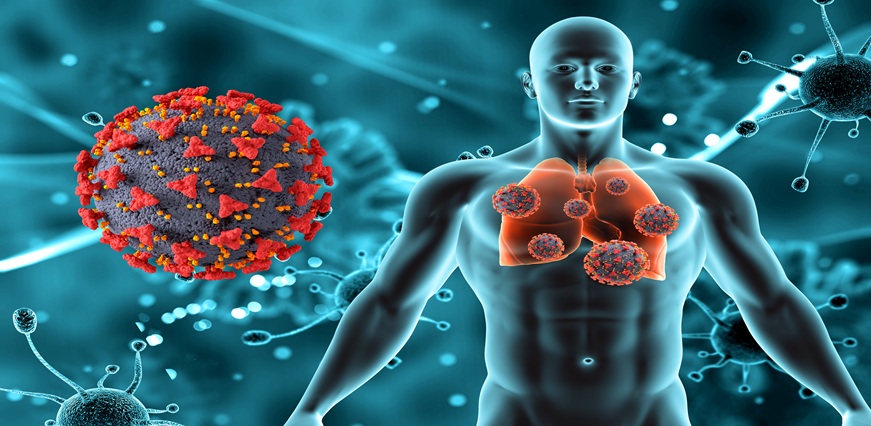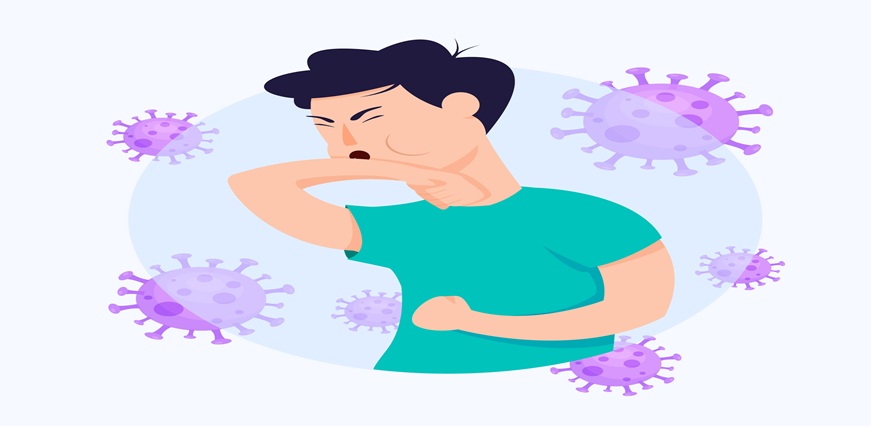Are you experiencing itchy, red, or scaly skin? It might be more than just a rash. Fungal infections are common and can affect anyone - from your feet to your scalp! These pesky infections range in severity and symptoms, but one thing is for sure: they're not fun. In this blog post, we'll dive into what fungal infections are, their causes and symptoms, who's at risk for contracting them, how they spread, treatment options available to those who have them already as well as prevention methods that could save you the hassle of dealing with these annoying pests in the future!
What is a Fungal Infection?
Fungal infections are caused by fungi, which are microorganisms that can live both indoors and outdoors. Fungi can be found in soil, plants, and even animals. These organisms thrive in warm and moist areas - such as the armpits or groin area - but they can also affect other parts of the body such as nails or hair.
Symptoms of a Fungal Infection
Fungal infections can affect various parts of the body, including the skin, nails, and lungs. The signs and symptoms of a fungal infection may vary depending on the affected area.
- Skin fungal infections- Commonly cause redness, itching, rash or scaling. Athlete's foot is a common type of skin fungus that affects the feet causing itching and burning sensations between toes or soles.
- Nail fungal infections- Usually cause thickened, discolored or brittle nails. If left untreated for long periods it could lead to pain while walking as well.
- Lung fungal infections- Present with fever and coughing accompanied by shortness of breath in some cases. It’s important to note that lung fungal infections are rare but should be taken seriously when they do occur as they could be life-threatening if not treated properly.
Causes of a fungal infection
Fungal infections are caused by various types of fungi, including yeasts and molds. These fungi can be found in the environment, such as soil, water, and plants. They may also live on human skin or inside the body without causing harm.
Some common causes of fungal infections include weakened immune systems due to illnesses like HIV/AIDS or cancer treatments. People with diabetes, obesity, or other chronic health conditions are also at higher risk for these infections.
Environmental factors can also contribute to the development of fungal infections. For example, prolonged exposure to moisture can lead to athlete's foot or nail fungus. Wearing tight-fitting shoes or synthetic fabrics that trap moisture against the skin increases this risk.
Who is most at risk for fungal infections?
Fungal infections can affect anyone, but some people are at a higher risk than others. Infants and elderly individuals with weaker immune systems are more prone to fungal infections due to their bodies being less capable of fighting off the infection. People who have underlying health conditions that weaken their immune system such as HIV/AIDS or cancer patients undergoing chemotherapy are also at high risk.
Individuals with diabetes or other chronic diseases that require medications which suppress the immune system may also be vulnerable to fungal infections. Additionally, those who have undergone organ transplants or bone marrow transplants are at increased risk because they take immunosuppressive drugs.
People who wear contact lenses and do not follow proper hygiene practices may develop fungal keratitis, an infection in the cornea caused by fungi. Athletes who share equipment like helmets and pads could spread ringworm fungus easily among themselves if proper cleaning is not done after use.
Risk factors for a fungal infection
There are several risk factors that can increase the likelihood of developing a fungal infection. One of the most common is having a weakened immune system, which can be caused by diseases such as HIV/AIDS or cancer, or by medications that suppress the immune system.
Another risk factor is having certain medical conditions, such as diabetes or obesity, which create an environment where fungi can thrive. Additionally, people who have undergone organ transplants or other types of surgery may be at higher risk due to the use of immunosuppressive drugs and disruption of normal skin barriers.
Environmental factors can also play a role in fungal infections. Living in warm and humid environments increases exposure to fungi such as mold and yeast. Poor hygiene practices and living in crowded spaces like dormitories or military barracks also increase transmission rates for fungal infections.
How do Fungal Infection spread?
One of the common ways that fungal infections spread is through direct contact with an infected person or animal. This could be through touching, kissing, or sexual contact. Fungi thrive in moist environments such as showers, locker rooms, and swimming pools which makes it easier to contract a fungal infection from these places.
Another way that fungi can spread is by inhaling airborne spores released by certain types of fungi. This often happens when you breathe in dust containing mold spores or yeasts found in soil. Once inside your body, these spores begin to grow and multiply leading to a potentially serious infection.
It's also possible for fungal infections to be passed down from mother to child during childbirth if the mother has an active vaginal yeast infection at delivery.
Treatment of a fungal infection
Topical antifungal creams, lotions or powders are usually used to treat mild fungal infections such as athlete's foot or jock itch. These medications work by preventing the fungus from growing and spreading.
For moderate to severe fungal infections like ringworm or nail fungus, oral antifungal medications might be prescribed. Some common oral antifungal medicines include terbinafine, itraconazole, and fluconazole. The length of treatment varies based on the type of infection but can range from several weeks to several months.
Prevention of a fungal infection
Taking preventive measures is crucial in mitigating the risk of fungal infections. By adopting simple hygiene habits, you can protect yourself and others from these infections.
Firstly, maintain personal cleanliness by regularly washing your hands with soap and water. This not only prevents fungal infections but also other diseases caused by bacteria and viruses.
Keeping your skin clean and dry is another important factor, especially in areas prone to moisture like feet or armpits. Use antifungal powders if necessary to reduce excessive sweating that may create a suitable environment for fungi to grow.
Wear breathable clothing made of natural fibers such as cotton or linen. These materials allow air circulation around the body, reducing the chances of developing a fungal infection due to trapped sweat.
Maxlab offers an exhaustive list of tests for a comprehensive diagnosis of your health. Take a look at Sputum Fungal Culture Test for detecting bacteria in your body.
Conclusion
Fungal infections are a common problem that can affect anyone regardless of age or gender. The symptoms and severity of the infection may vary depending on the type of fungi involved and the affected area of the body.
It is essential to seek medical attention if you suspect that you have a fungal infection as it can be easily misdiagnosed as other skin conditions. The treatment options for fungal infections range from over-the-counter creams to prescription medications, depending on the severity of the infection.













 7982100200
7982100200























 To reach our help desk call 9213188888
To reach our help desk call 9213188888.png)
Comments